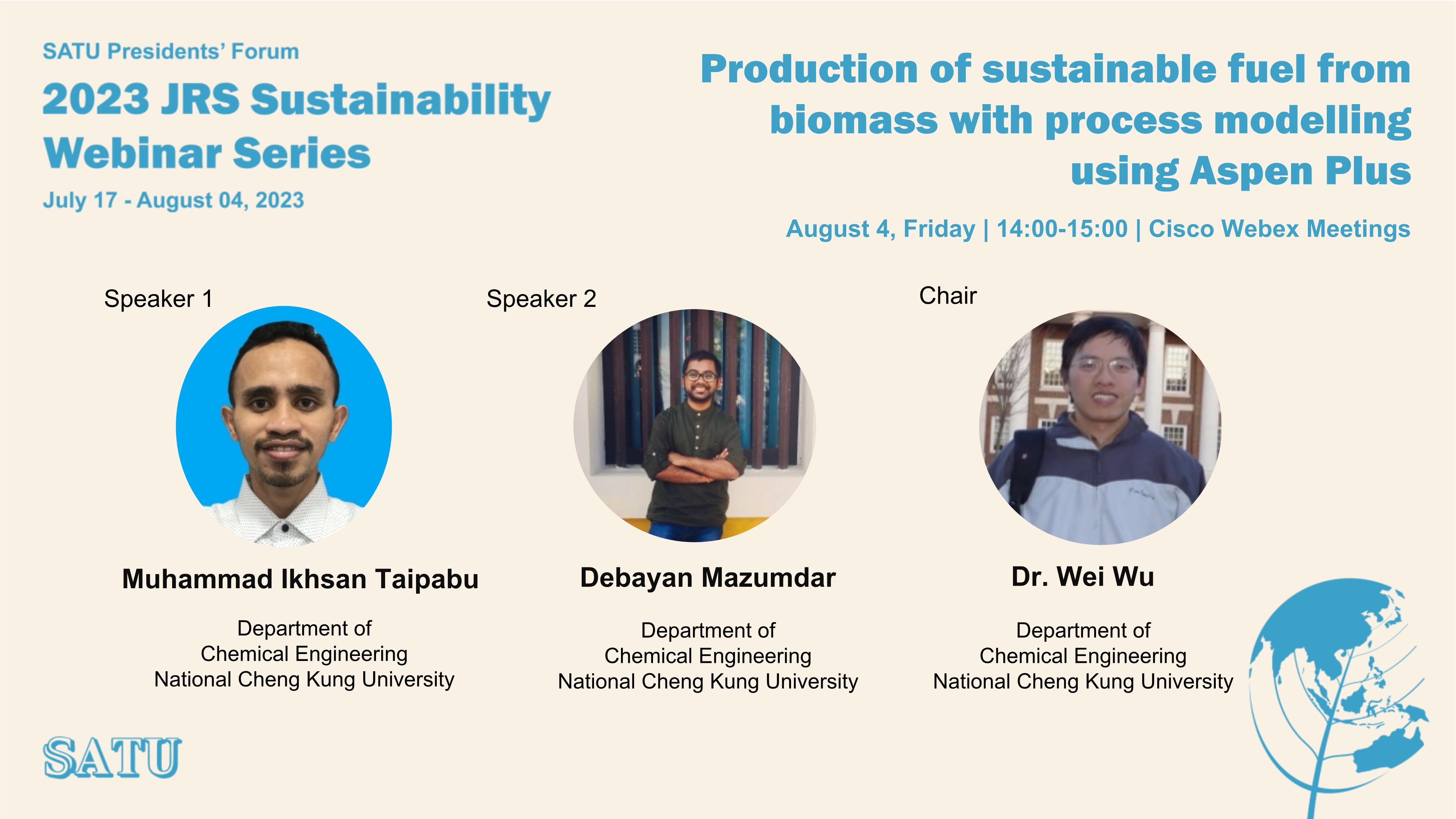2023 JRS Webinar (6) | Production of sustainable fuel from biomass with process modelling using Aspen Plus

2023 JRS Sustainability Webinar Series (6)
Production of sustainable fuel from biomass with process modelling using Aspen Plus
Date: 4 August 2023 (Friday)
Time: 14:00 - 15:00 (GMT+8 Taiwan)
Language: English
Way of Participation: Cisco Webex Meetings
Registration: HERE
Other JRS Webinars: HERE
u Speakers u
Muhammad Ikhsan Taipabu
Department of Chemical Engineering, National Cheng Kung University
Debayan Mazumdar
Department of Chemical Engineering, National Cheng Kung University
u Chair u
Dr. Wei Wu
Department of Chemical Engineering, National Cheng Kung University
u About the Webinar u
Fats, oils, and grease (FOG) is a waste that causes sewer blockage in many countries and requires expensive process to remove it. This study focuses on the conversion of fats, oils, and grease (FOG) waste into energy and chemicals using Aspen Plus platform. The process involves esterification and transesterification reactions to produce biodiesel from FOG feedstock, which has a high free fatty acid content. Various catalyst types, including homogeneous and heterogeneous catalysts, are evaluated for their advantages and disadvantages. The biodiesel production catalysed by homogeneous catalysts shows potential energy savings compared to the base-case, but it results in wastewater during catalyst separation. On the other hand, biodiesel production catalysed by heterogeneous catalysts has higher energy consumption but offers easier separation. A recommended process design, Scheme-5, involves using Amberlyst-15 as a heterogeneous catalyst for esterification and KOH as a homogeneous catalyst for transesterification, providing energy savings without wastewater production and yielding glycerol and K2HPO4 as side products. Another aspect of the study explores the utilization of crude glycerol, a byproduct of FOG-based biodiesel production, to produce value-added products. Glycerol steam reforming (GSR) is proposed as a method to convert glycerol into valuable products such as hydrogen gas or syngas. The study suggests incorporating CO2 utilization alongside GSR to address the high CO2 emissions associated with the process. A hydrogen and urea co-production system is proposed, where syngas produced from GSR is used for hydrogen production through a water gas shift reaction, and CO2 released from GSR is utilized for urea production. The study investigates the sensitivity of operating parameters in GSR, such as the steam to glycerol ratio, temperature, and pressure, and their impact on conversion, syngas yield, and cold gas efficiency (CGE).
Keywords: Glycerol, hydrogen production, steam reforming, syngas, urea production.
Enquiries
SATU Presidents’ Forum International Secretariat
satu@ncku.edu.tw | 886-6-2099250 | 886-6-2757575 #50962
https://satu.ncku.edu.tw/
